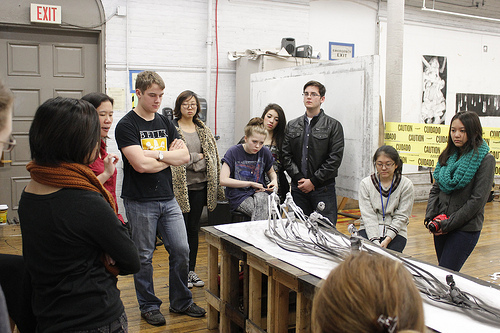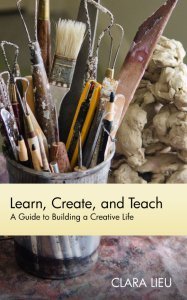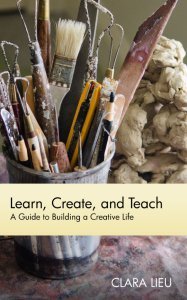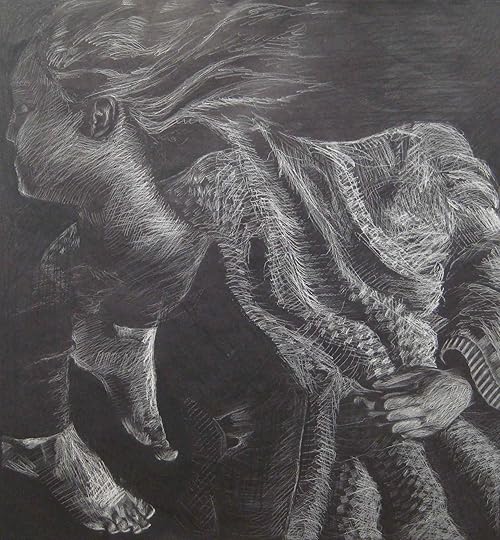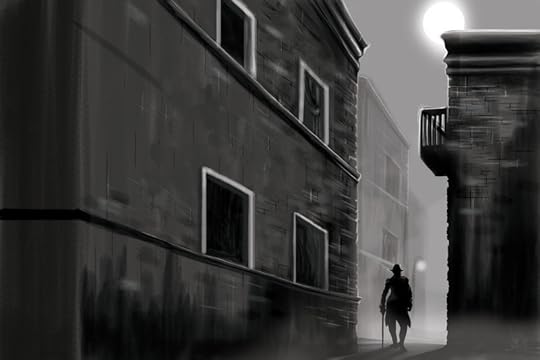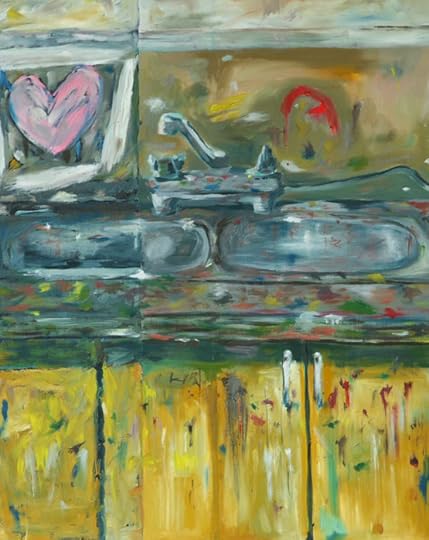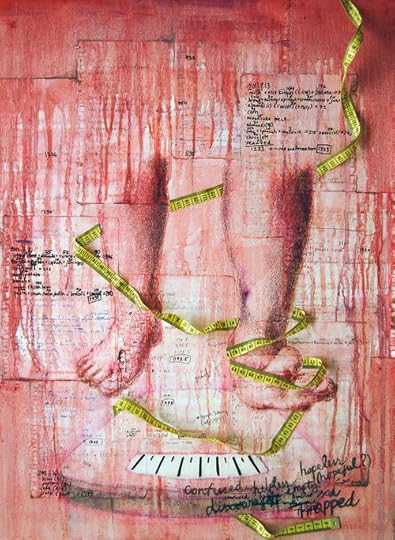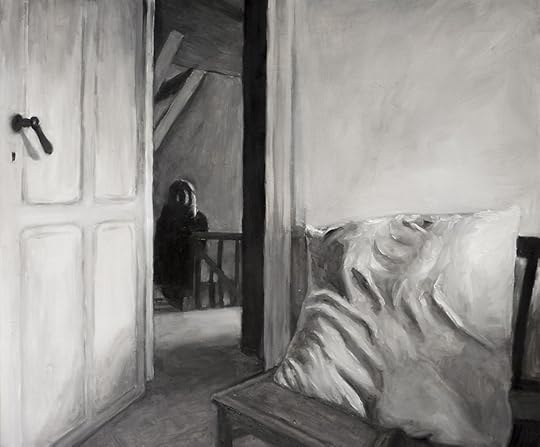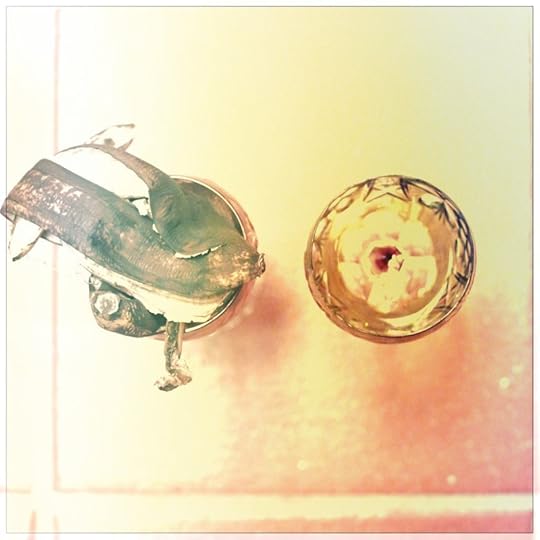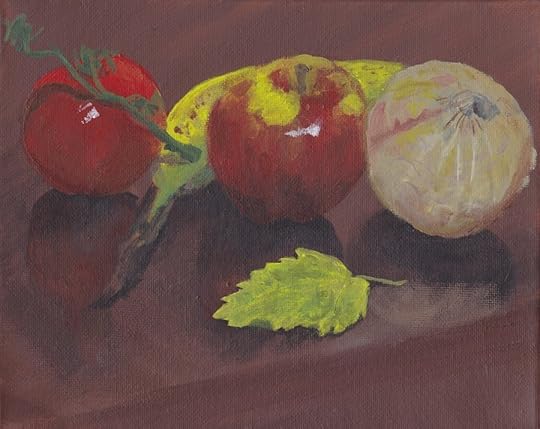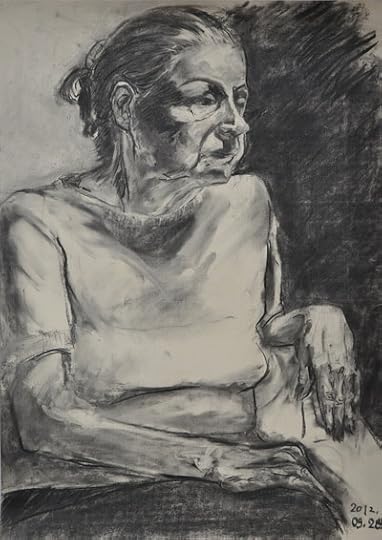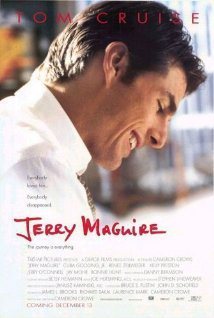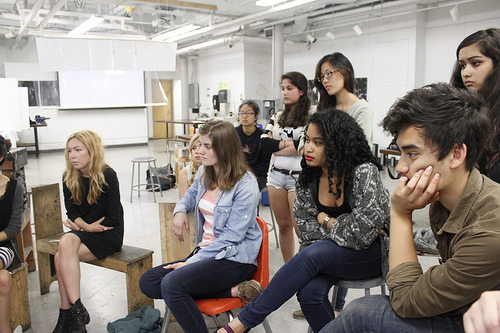Clara Lieu's Blog, page 48
August 8, 2013
Ask the Art Professor: Should college students study abroad even if it distracts from job preparation?
Welcome to “Ask the Art Professor“! Essentially an advice column for visual artists, this is your chance to ask me your questions about being an artist, the creative process, career advice, a technical question about a material, etc. Anything from the smallest technical question to the large and philosophical is welcome. I’ll do my best to provide a thorough, comprehensive answer to your question. Submit your question by emailing me at clara(at)claralieu.com, or by posting here on this blog. All questions will be posted anonymously. Read an archive of past articles here.
Here’s today’s question:
“Would you suggest students to go abroad during their college years even if it might distract from job and portfolio preparation?”
Absolutely. I’m a firm believer that one should take advantage of every opportunity to travel. For many students, studying abroad is one of the few chances they will get to immerse themselves in a foreign country for an extended period of time. Unless you get a Fulbright grant or win the Rome Prize, it’s unlikely that another opportunity will present itself. After graduation most students become so focused on their job search that getting up and moving to a foreign country for several months is just not a viable option.
Some people may argue that one can always take a vacation to a foreign country. That’s true, but studying abroad is very different than just taking a short vacation trip. I studied abroad in Rome for my entire junior year, and it was anything but a vacation. The first few weeks were fun, but after that, the reality of living in a foreign country really started to settle in. Normal every day tasks, like talking on the phone, required hard work and concentration to achieve. I remember that I used to get headaches at the end of the day from listening to and trying to speak Italian all the time. I never thought this would have happened to me, but I found myself craving anything that was remotely American because I wanted something that felt familiar for a change. Living in a foreign country is the ultimate life lesson that just can’t be replicated any other way.
I saw so much when I was studying abroad. When I was a freshman studying art history, learning about all of these famous works of art through textbooks and slides felt so sterile and abstract that I found myself feeling completely disconnected and apathetic towards much of the work. Then there I was in Rome, where walking down the street meant watching the pages from my art history book come alive. And even better, I actually remembered all of those works from my art history books and was pleasantly surprised at my ability to name every one. It was thrilling to be able to truly understand what those works were really about because I was able to experience them in person. I remember putting myself on a personal mission to see every single Caravaggio painting that was within reach. I saw every Gothic cathedral in Paris and in the surrounding cities. I don’t think I will ever have a chance to see that much in such a short period of time ever again.
Be prepared for some drawbacks to studying abroad that can be tough when you return. The truth of the matter is that studying abroad is one big distraction from portfolio preparation. I remember when I came back that I felt jealous of my peers, who had been working hard and taking all sorts of neat classes while I was abroad. Many of them had created a substantial amount of work, and had made tremendous strides in their work, especially in terms of technique. By comparison, I had achieved very little artwork when I was abroad; I found it so hard even think straight much less accomplish portfolio caliber works when I was there. I felt like I was behind where my peers were and had a lot of catch up to do.
I recommend going junior year, because then you have senior year to catch up and get yourself back on track. Another option is to take one semester abroad, as opposed to an entire year. One semester abroad, the equivalent of just a few months, is not going to make or break your career. It will certainly not be the difference between whether or not you can get a job or not. I can guarantee that you will treasure a study abroad experience for the rest of your life.
Did you study abroad? What was your experience like?
Related articles
“What is the purpose of a degree in fine art?”
“What should you include in an art portfolio for art school or college?”
“When you have a fine arts degree, what do you do for the rest of your life?”
“How do you preserve your artistic integrity within the strict time limitations in an academic setting?”
“Is art education really so popular in western countries?”
“What do you do after you’ve finished formalized training?”


August 7, 2013
My Bubble
I’m in a strange place right now with all of my work, and I’m trying to figure out how to organize and direct my focus day to day. My head is completely consumed by my book, and I have to admit that I have zero interest in my studio practice right now. I have all of this time on my hands to work on my studio practice, but the problem is that my mind simply isn’t in the right place for that.
I’ve done all of the grunt work getting my book out to key people, so now it’s a matter of waiting to see the fruits of my labor. So there’s my problem- I hate waiting, and I hate feeling like there’s nothing more for me to do. I’m certain that there must be more to do, I just can’t figure out what that is.
I also worry that my book will only stay inside my “bubble” of colleagues and friends. In order to break through this bubble, I need someone in the media who has an strong, established audience to champion the book for me. Unless that happens, I fear that my book is doomed to remain inside my bubble.
In other news, I’ve been devouring the reviews of my book on Amazon as they come in. There are already 15 reviews! Here’s one of my favorites, written by a former student of mine.
In my freshman year at RISD, I remember Clara saying that her mentors’ words of wisdom from when she was a student would repeat in her head like a mantra while she worked, even 15 years later.
Years after I heard that, it’s Clara’s words that repeat in my head while I work. She has a knack for cutting to the heart of an issue in a succinct manner. Clara classics like “Jump off the cliff”, “Never apologize for your work”, and “If you’re afraid of something, you should probably do it” are short but powerful maxims that, in my experience, lead to greatly increased artistic productivity.
That’s why I’m so glad Clara has published this book. It’s a clear, pithy distillation of all the great advice that you will hear in a class with Clara. The book is well-designed, dotted with often hilarious illustrations, and beautifully organized. There is also a section at the end with frequently asked questions like, “How do I manage my time better?” and “What if people don’t like my work?” Clara’s advice in this part is relevant not only for the beginner, but for older artists facing temporary crises.
Lastly: books can be judged, in part, by how you feel after reading them. Even though I’ve heard much of this advice from Clara before, reading this book reminded me of a lot of things I love about making and provided an extra boost of positive energy. After finishing, I felt prompted to reflect on how I could become even more productive and inspired to push myself harder. I will keep this book close at hand wherever I go or work in the future.


August 6, 2013
Ask the Art Professor: How do you gain confidence in your artwork?
Welcome to “Ask the Art Professor“! Essentially an advice column for visual artists, this is your chance to ask me your questions about being an artist, the creative process, career advice, a technical question about a material, etc. Anything from the smallest technical question to the large and philosophical is welcome. I’ll do my best to provide a thorough, comprehensive answer to your question. Submit your question by emailing me at clara(at)claralieu.com, or by posting here on this blog. All questions will be posted anonymously. Read an archive of past articles here.
Here’s today’s question:
“I was wondering if you have any tips on gaining confidence in your artwork, your ability to make artwork, and your general practice because I am in a position where I should be feeling pretty good about my art and such, but I don’t, and I know that that’s something that I want to and need to improve on. “
I’ve found in my experience that confidence is one of those attributes that comes and goes for many artists. My confidence can swing back and forth quite dramatically, and I never quite know when I sit down to work how I’ll be feeling. I have days where I feel very strong, like I’m capable of accomplishing anything. Then I have days when I feel like an insignificant speck of dust in the universe, and that I’ll never ever be good enough to satisfy myself. Being an artist is a wild ride of emotions that one can never predict.
A large part of gaining a basic sense of confidence as an artist is simply time and experience. I know, not the answer that most people want to hear, but it’s true. The more seasoned you are as an artist, the more crap you’ve gone through, the more likely you are to build confidence in yourself and your abilities. I know that when I was in high school that I did not have remotely the kind of confidence that I have in my work now. So much of that is simply the years of hard work and effort that I’ve invested in my artwork since then. Every single experience that you have as an artist, whether good or bad, informs and adds to your confidence.
In the short term, there are small strategies that you can use to boost your confidence. Many artists think that they need wait around for moments of success to boost their confidence, whether it’s a positive comment from someone on their artwork, professional validation through a job, a grant, etc. Sure, that’s great when it happens, but you can’t count on these events to occur regularly. Actually, I think that I feel most empowered when I’ve taken the self-initiative to challenge myself with a difficult task, and have followed through on completing that task. By doing this, I know that I’ve taken full responsibility for my own success and progress. Artists have to be very proactive, and have to learn to take control of the situation. You can’t be passive and wait around for positive experiences to come to you, you have to create those positive experiences for yourself. Fabricate your own challenges and opportunities, and then make them happen.
Another strategy is to make sure that you have good mentors who you can talk to in person. I know that I find tremendous comfort in my mentors. When I feel low about my abilities, I talk to my mentors and remind myself that someone who I respect and admire believes in me. This is a very simple but powerful thought that pumps me up and keeps me going.
Related articles:
“How do you keep pushing yourself to get to that next level?”
“Would you improve more if you took art classes than just studying on your own?”
“How do you learn the basics?”
“How do you break out of your comfort zone?”
“How do you get out of thinking you can’t get any better?”
“How do you develop patience for learning curves?”


August 5, 2013
Get my book on Kindle!
Get your copy of “Learn, Create, and Teach: A Guide to Building a Creative Life” on Kindle today! Purchase the ebook here.
Whether you are a student, professional, or teacher of the arts, this book delivers succinct, practical, and candid advice that addresses both common concerns in the creative path and the real-life challenges an artist faces in the real world.
Breaking down the creative arc into “student,” “professional,” and “teacher” reinforces that we all have something to learn, to create, and to teach. Addressing universal problems, fears, and roadblocks faced by artists, this book offers solutions, hope, and motivation.
Those starting their art career will value the tips and strategies for becoming known (“Be able to sum up your work in a single sentence.”) as well as staying motivated (“Never ever stop making your art.”). Teachers will gain insights from not only my experiences but also the perspectives of my colleagues, mentors, and students. This easy-to-digest volume has advice that can be readily put into practice by anyone.


August 2, 2013
Book Reviews
Reviews of my book are starting to trickle in on Amazon. It’s very refreshing to hear new perspectives, and many reviewers have made points that I would never have been able to come up with on my own. Below are some excerpts. You can read all of the reviews in their entirety here.
“This book is really a great collection of key lessons that will help anyone become more successful in life and their chosen profession.”
“The wisdom in this book would take art students and new artists years to accumulate…”
“A definite must-have for any prospective or on-coming art students curious about what to expect, the practical advice provided here ultimately pertains to anyone at any level in a creative career.”
“…reading this book reminded me of a lot of things I love about making and provided an extra boost of positive energy. After finishing, I felt prompted to reflect on how I could become even more productive and inspired to push myself harder.”
“Brief, warm and very readable, I recommend this to anyone, not just artists, for whom life and career mean nearly the same thing.”
“It strips away any confusing rhetoric about the artistic process and exposes the bare bones of how to approach your own work in a creative and productive way. In doing so, the seemingly gargantuan task of beginning to create art is broken down into smaller digestible steps- many of which include embracing any “failures” along the way, it’s all part of the process.”


July 31, 2013
Crit Wall #16
Welcome to “Crit Wall“, where I offer online critiques of individual art pieces. To submit, send me a link to one image by commenting here, or by emailing the link to me at clara(at)claralieu.com. Please, NO ATTACHMENTS. Include the media, size, and title if you have one. Only submit original, finished works, no works in progress or sketches. Artwork created for a RISD degree program course is not eligible. You’ll receive notification if your piece is selected to be critiqued. Only one submission per person please, and know that I will not be able to critique every single work due to the volume of submissions. All images will be posted anonymously.
“Stolen Innocence”
36″ x 18″
mixed media
The format of this piece is engaging, the fact that it’s an elongated rectangle is unusual and provides a feeling of gravity and pull from top to bottom that is successful. There is a push from the deep blacks of the upper section of the piece that moves downwards towards the bottom of the piece.
Overall, this piece needs to work on transitions. Due to the nature of the mixed media, there are multiple transitions throughout the work: where three-dimensional media moves into two-dimensional media, where the black paint moves into the white textured area, etc. Many of the transitions are rather abrupt and come across as stiff. One of the greatest challenges with mixed media is getting transitions to work well, and in this piece, many of the areas seem isolated from each other. There needs to be a greater sense of fluidity from one section to the next.
The black paint and the drips of black paint could work, if the quantity of the paint was significantly increased. Right now the white is the dominant color in the piece as opposed to the black; if this relationship could be reversed, the black paint would be much more potent. The drips of black paint look too clean and planned out, if there could be a more spontaneous quality to them they would appear to be more active and menacing.
The texture that is mixed into the piece is very beautiful, but needs some kind of direction. The texture is applied like wallpaper, where everything throughout the piece is the same. The texture needs to shift and change, perhaps in some areas it’s heavier, and lighter in others. This kind of variation would make the piece look less flat and predictable.
The hand is problematic because it calls too much attention to itself, and the straightness of the arm makes the hand look stiff. The hand needs to look more aggressive and frightening, right now it seems too tame, it needs to look like it’s really grabbing the face. If there were several hands in this piece the overall composition would be much more animated and could communicate the concept behind the piece better.
Out of the three plaster faces, the one that is the most effective is the one in the middle. The plaster face in the middle is able to emerge more slowly from the background and appears to fade seamlessly. There is a good balance of texture and paint in this face. The face at the top is confusing, it has no facial features and therefore seems out of place with the other two faces. The face at the bottom looks tacked on.
While the meaning of the text is compelling and says something about the intent behind the artwork, visually the text looks out of place and seems like it was a last minute decision. The text would be more impactful if it could be visually integrated into the piece somehow, or it could be removed entirely.
Past “Crit Wall” pieces are below. Click on the images to read the critique.


July 30, 2013
Emotions
I’m experiencing a whole range of emotions with the release of my book. I’m giddy with excitement, and a nervous wreck at the same time. A few weeks back I had posted about feeling nervous about putting my book out there. Those feelings have only been growing with every book I send out. It really hit me when I sat down the other day to sign free copies that will be given to my colleagues. Is this book just really shallow? Am I just embarrassing myself? It’s very silly, but I played out a whole scenario in my head where I became Jerry McGuire, who was fired from his company for putting his thoughts down on paper.
Today I also received my first review on Amazon, from a reviewer I don’t personally know, which you can read here. It was really interesting and enlightening to read someone else’s perspective on the book. I’ve been so deeply immersed in the book that I find I really can’t get outside of my own head.
I’m trying to brace myself for the range of reviews that are going to be coming in over the next few weeks. As a visual artist, I’ve had to deal with both positive and negative feedback on my artwork over the years. I’ve become so accustomed to all sorts of different comments that I rarely let the comments get to me. Somehow though, this feels different. Seeing myself as a writer is a completely new role for me that I’m still getting used to, and it’s a different part of me that’s being critiqued this time.


July 29, 2013
Ask the Art Professor: When is it too early to start promoting your work on the Internet?
Welcome to “Ask the Art Professor“! Essentially an advice column for visual artists, this is your chance to ask me your questions about being an artist, the creative process, career advice, a technical question about a material, etc. Anything from the smallest technical question to the large and philosophical is welcome. I’ll do my best to provide a thorough, comprehensive answer to your question. Submit your question by emailing me at clara(at)claralieu.com, or by posting here on this blog. All questions will be posted anonymously. Read an archive of past articles here.
Here’s today’s question:
“I know many people post their artwork on Facebook, RISD portfolios, or Tumblr, etc. and I’ve seen how some of their work has been plagiarized or reposted without permission. When is it “too early” to start promoting your work via the Internet, or does the overall publicity override any negative effects? Should I be flattered that people are using my images with/without permission since I am still an amateur artist? Or am I just being paranoid?”
The reality is that the Internet has become an indispensable tool for artists today, especially for ones who are at the beginning of their careers. The Internet is this vast resource that is so accessible that it’s hard to believe anyone wouldn’t want to use it to get their artwork out there. I hear young artists saying all the time that they won’t post their artwork online because they worry about people stealing their work. Yes, that can be a concern, but in my experience the benefits of having your artwork online significantly outweigh the negatives. I’ve made connections with people all around the world, I’ve received wonderful comments on my work, and I’ve sold artwork. None of that would have happened if I had refused to post my artwork online.
Accept that once your artwork is posted online, there’s pretty much nothing that you can do about your work being reposted without permission. When I Google myself, I see tons of websites that have posted my work. I myself have no problem with that as long as they’re giving me credit and using my name with the image. In essence, it’s just more free publicity for me. For me so far, being online has been a really good experience.
I think the best way to have some degree of control over this is to establish a strong online presence for yourself so that you are the one generating content that is associated with your name and work. For example, I’ve made sure that I have a presence on all of the major social networks and portfolio websites so that when someone Googles me, the sites that pop up are the ones that I am control of. (Google me and you’ll see) This way, I can make sure that my work is always presented professionally when seen online. It is a tremendous amount of work to establish a comprehensive online presence, but it’s well worth the investment of your time and energy.
As for when to starting promoting your work online, my suggestion would be to start in college. I don’t recommend posting your work online when you’re in high school. The work is too immature at that stage and could actually be detrimental to your online presence later because the work doesn’t look professional enough. During your college years, you’ll likely be applying for summer jobs, internships, etc. and many employers will want the chance to be able to see a portfolio online right away. You never know when something could come up that will require this, so it’s best to be prepared in advance. I was once looking to hire someone to teach a workshop, and one of the applicants, who was a recent college graduate had no online portfolio. It was a pain because I wasn’t able to quickly and conveniently access their portfolio and information. Have an online portfolio ready to go at all times so that you are prepared for situations like this.
What’s been your experience having your artwork online? Have you seen your work reposted without permission, what was your reaction to that experience?
Related articles:
“How do you know when your artwork is good enough to show to the world?”
“How do you get people to notice your artwork online?”


July 28, 2013
Book Stores
Since I received my shipment of 200 books last week, I’ve been working hard trying to get the book into local independent book stores. I’m completely new at this, so it’s been a really interesting learning experience. I’ve been pleasantly surprised to find out that many independent book stores will take books from local authors on consignment for three months at a time. My attitude from the beginning was that the worst thing they can say is no, so it doesn’t hurt to ask. I’ve been on the phone, emailing, and driving around town dropping off copies to the stores over the past two days. I’m pleased that the book is now available at the Harvard Book Store in Cambridge, MA and New England Mobile Book Fair in Newton Highlands, MA. The book will be available on Amazon and on the Kindle Store very soon, but you can get your copy today at these two stores!


July 27, 2013
And the winner is…
…Donna Bloomquist! Thanks to all of you for participating in the giveaway! In other news, my book is now available at the Harvard Book Store in Cambridge, MA!





